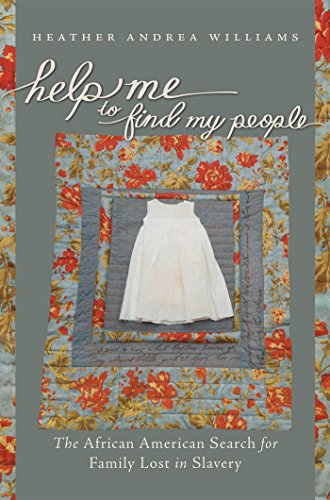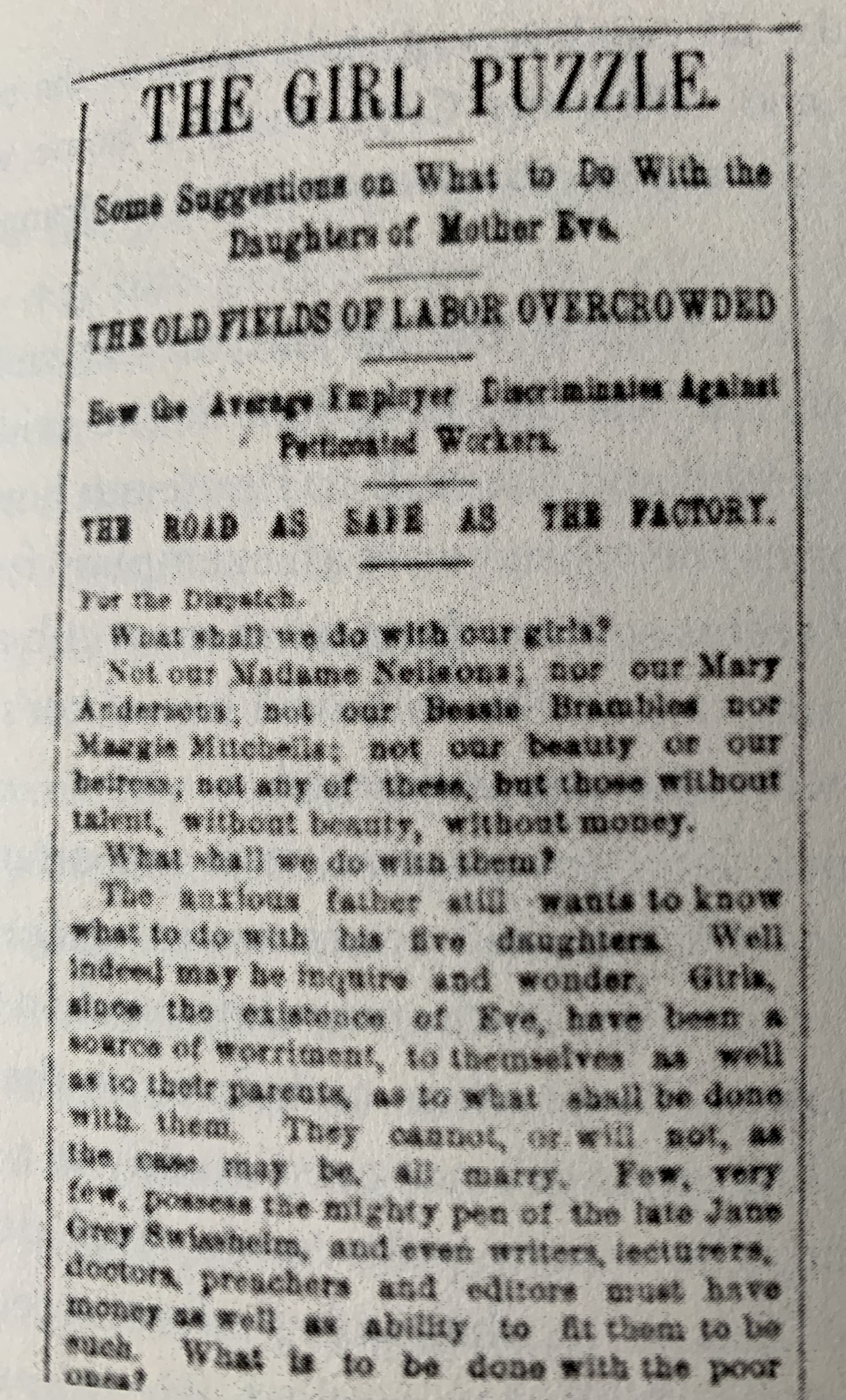
Susan B. Anthony has been in the news lately. This year is the centenary of women (well, white women) getting the vote in America and then there has been a little bit of extra controversy about a presidential pardon. In 1872, Susan B. Anthony set out to cast a ballot in a presidential election. Firm in her belief that the Fourteenth Amendment gave her – as a US Citizen – the right to vote, she entered a barbershop in Rochester, New York, and persuaded the men working there as registrars, to register her and three of her sisters and allow them to vote in the election.
All persons born or naturalized in the United States, and subject to the jurisdiction thereof, are citizens of the United States and of the state wherein they reside. No state shall make or enforce any law which shall abridge the privileges or immunities of citizens of the United States; nor shall any state deprive any person of life, liberty, or property, without due process of law; nor deny to any person within its jurisdiction the equal protection of the laws.
Fourteenth Amendment, Section 1.

As a citizen, she declared, she had the privilege of voting, and she cast her vote for the Republican incumbent, President Ulysses S. Grant. (He won.) But Susan B. Anthony’s action, as she probably expected, did not go unnoticed. She ended up being arrested some days after the election and was charged with knowingly, wrongfully, and unlawfully voting. She was tried, found guilty and fined $100 – a fine, it should be noted, that she never paid. Her actions brought national attention to the question of equality.
Twenty four years later, Susan B. Anthony was interviewed by the journalist Nellie Bly. In early February, 1896, Anthony was just days away from her seventy-sixth birthday and Bly was thirty-one. Anthony had spent her life devoted to women’s rights. Here’s Bly’s first impression:
She sat in a low rocking-chair, an image of repose and restfulness. Her well-shaped head, with its silken snowy hair combed smoothly over her ears, rested against the back of the chair. Her shawl had half-fallen from her shoulders and her soft black silk gown lay in gentle folds about her. Her slender hands lay folded idly in her lap, and her feet, crossed, just peeped from beneath the edge of her skirt. If she had been posed for a picture, it could not have been done more artistically or perfectly.
Nellie Bly, The World, February 2nd, 1896

In typical Nellie Bly style, the interview is wide-ranging and moves seamlessly from the serious to the personal and back again. Read it and you will learn how Anthony came by her middle name (Brownell), what she liked to eat for breakfast (fruit, grain and coffee), and how many times she had fallen in love. You’ll discover a sharp intellect – she begins by asking her interviewer her own question about current events in Cuba – and a keen memory, as she describes with great good humor her years as a teacher. She lays out how she came to see that voting rights was the battle that had to be won before all others. In her own words:
I had barked up the temperance tree, and I had barked up the teachers’ tree and I couldn’t do anything. I had learned where our only hope rested.
Susan B. Anthony, The World, February 2nd, 1896

Susan B. Anthony looks very serious in this portrait, but Bly brings her to smiling life in her seven column interview. Anthony comes across as approachable, humorous, and intelligent, but also very human, rooted in her family, relentlessly committed to her cause, and full of optimism for the future. From her views on flowers, bicycles and bloomers, to her committed temperance (she never tasted alcohol in her life), Susan B. Anthony fully comes to life in this interview. As such, it is also a tribute to Nellie Bly’s skills as a journalist, her readiness to ask questions big and small, and her ability to bring her subject’s voice and character to her readers’ attention. In Nellie’s own words, “Miss Anthony enjoys a good joke and can tell one. She never fails to see the funny side of things though it be at her own expense.”
Anyone curious to quickly know Susan B. Anthony, beyond the standard biographical record, could do a lot worse than read this whole interview. It’s available on line as a pdf here, and photographed for slightly easier reading here. But as internet resources come and go, and as has been my habit during my research for The Girl Puzzle, I’ve also transcribed the whole thing and you can read it here. I hope you will!










 This is a dual timeline novel, set in Augustine, Louisiana in 1875 and 1987. The earlier story concerns a young woman, born into slavery, called Hannie Gossett. Hannie is eighteen in 1875, but when she was six her family were sent to Texas for the duration of the Civil War. Enter a scurrilous nephew of Hannie’s owners who sells off the slaves as they travel, separating Hannie from her eight siblings and mother. Now eighteen, Hannie is free, but still tied to the Gossett family, trying to earn a portion of land. All of her family members are still missing.
This is a dual timeline novel, set in Augustine, Louisiana in 1875 and 1987. The earlier story concerns a young woman, born into slavery, called Hannie Gossett. Hannie is eighteen in 1875, but when she was six her family were sent to Texas for the duration of the Civil War. Enter a scurrilous nephew of Hannie’s owners who sells off the slaves as they travel, separating Hannie from her eight siblings and mother. Now eighteen, Hannie is free, but still tied to the Gossett family, trying to earn a portion of land. All of her family members are still missing.











 When a new asylum for the insane was built on Ward Island in 1872, Blackwell’s Asylum became an all-female establishment. Nellie Bly carried out her undercover work there in September and October of 1887 and brave though she was, Nellie was not fool enough to get herself sent to either the Lodge or the Retreat. Here’s one of her descriptions:
When a new asylum for the insane was built on Ward Island in 1872, Blackwell’s Asylum became an all-female establishment. Nellie Bly carried out her undercover work there in September and October of 1887 and brave though she was, Nellie was not fool enough to get herself sent to either the Lodge or the Retreat. Here’s one of her descriptions:




 It’s Nellie Bly’s birthday this weekend and in her honor, not only is
It’s Nellie Bly’s birthday this weekend and in her honor, not only is  March 4th 1913 was inauguration day for a new president – Woodrow Wilson. Nellie Bly, in D.C. for the Women’s Suffrage Parade the day before (she rode in horseback in the parade AND reported on the event for the New York Journal) slipped up onto the inauguration platform just minutes before the new president was sworn in. In her newspaper report the following day she described her thoughts. “Will you and I,” she wondered, “ever see a woman stand there and take the oath of office?”
March 4th 1913 was inauguration day for a new president – Woodrow Wilson. Nellie Bly, in D.C. for the Women’s Suffrage Parade the day before (she rode in horseback in the parade AND reported on the event for the New York Journal) slipped up onto the inauguration platform just minutes before the new president was sworn in. In her newspaper report the following day she described her thoughts. “Will you and I,” she wondered, “ever see a woman stand there and take the oath of office?”
 Here’s clipping from
Here’s clipping from 




 If Nellie were in my shoes, she’d be a lot more upbeat. She was a go-getter – as I’m sure the book will show – although her life, like everyone else’s, wasn’t all success and accolades. Even as she achieved her ambition and got a much coveted job at Joseph Pulitzer’s New York World newspaper, she faced stiff competition to keep her column in the Sunday edition. And although she changed the face of women’s journalism by feigning madness and reporting from inside the Blackwell’s Island Insane Asylum, her stunt reporting wasn’t always serious or hard-hitting. Only a few months after her breakthrough articles about the madhouse took the newspaper industry by storm, Nellie was making her own dance costume and taking ballet lessons. On December 18th, 1887, The World published
If Nellie were in my shoes, she’d be a lot more upbeat. She was a go-getter – as I’m sure the book will show – although her life, like everyone else’s, wasn’t all success and accolades. Even as she achieved her ambition and got a much coveted job at Joseph Pulitzer’s New York World newspaper, she faced stiff competition to keep her column in the Sunday edition. And although she changed the face of women’s journalism by feigning madness and reporting from inside the Blackwell’s Island Insane Asylum, her stunt reporting wasn’t always serious or hard-hitting. Only a few months after her breakthrough articles about the madhouse took the newspaper industry by storm, Nellie was making her own dance costume and taking ballet lessons. On December 18th, 1887, The World published 


 I guess where I’m going with this, is that with 30 days to go until
I guess where I’m going with this, is that with 30 days to go until 






 George Madden, recognising Elizabeth’s great potential, didn’t want to publish “Mad Marriages” with the Lonely Orphan byline. She needed a name, but as was customary at the time, it couldn’t be her own.
George Madden, recognising Elizabeth’s great potential, didn’t want to publish “Mad Marriages” with the Lonely Orphan byline. She needed a name, but as was customary at the time, it couldn’t be her own. He called into the newsroom for suggestions and, from among the replies, picked out Nelly Bly. The name came from a popular song, written in 1850 by Stephen Foster, known as ‘the father of American music’, and a Pittsburgh native.
He called into the newsroom for suggestions and, from among the replies, picked out Nelly Bly. The name came from a popular song, written in 1850 by Stephen Foster, known as ‘the father of American music’, and a Pittsburgh native. On January 25th, 1885, The Pittsburg Dispatch published its first article by a new employee. In the week leading up to this date, a young woman called Elizabeth Cochrane had answered George Madden and Erasmus Wilson’s advertisement, seeking the author of a letter they’d received, signed only by a ‘Lonely Orphan Girl.’
On January 25th, 1885, The Pittsburg Dispatch published its first article by a new employee. In the week leading up to this date, a young woman called Elizabeth Cochrane had answered George Madden and Erasmus Wilson’s advertisement, seeking the author of a letter they’d received, signed only by a ‘Lonely Orphan Girl.’ And Madden, the editor, was a ‘mild-mannered, pleasant-faced boy,’ not at all the fierce, bushy-bearded man she’d imagined him to be.
And Madden, the editor, was a ‘mild-mannered, pleasant-faced boy,’ not at all the fierce, bushy-bearded man she’d imagined him to be.